
Optical Society of America
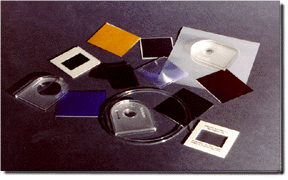
Lenses | Filters | Hologram | Optical Fiber | Grating | Polarizers | Mirror | Prism
Experiments with the Optics Kit
Lenses
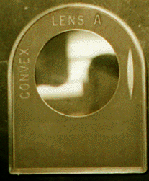
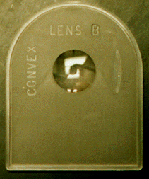
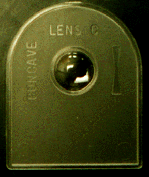
Various types of lenses are found in the Optics Discovery Kit. Lens A on the left is a double convex lens with a long focal length. Lens B is also a double convex lens, but it has a shorter focal length. Lens C, on the right, is a double concave lens.
To learn more about lenses, visit these pages:
Activities
Readings
Optics Kit Experiments
Fresnel Lens
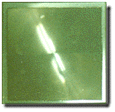
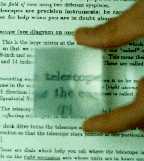
This type of lens is called a Fresnel lens, named after Augustin Fresnel, a French scientist who first developed this type of light-weight lens for lighthouses.
There's more on the Fresnel lens in the
Activities
Readings
Optics Kit Experiments
Filters

These are the four color filters found in your Optics Discovery Kit. Which one transmits the most light? Which the least?
Investigate color filters further at the
Activities
Readings
Hologram
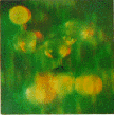
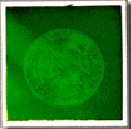
There are several different holograms scattered throughout the Kits. The hologram on the left is depicting a model of a complex molecule. On the right is a hologram of a silver dollar.
Find out how a hologram works at the
Readings
Optics Kit Experiments
Optical Fiber
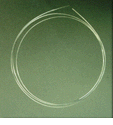
Optical fibers are being used extensively in the telecommunications world; in fact, most of our phone lines have been replaced by optical fibers. Included in the Kit is a small section of fiber. Look through one end of the fiber while you shine a light into the other end.
Try out your optical fiber at
Optics Kit Experiments
Read more about properties of optical fibers at
Diffraction Grating
The diffraction grating in the Optics Discovery Kit can be used to break white light into a spectrum. Try looking through the grating at a bright light source. Be sure you have the correct orientation!
Find out more about the diffraction grating and what it can be used for in the
Activities
Readings
Optics Kit Experiments
Polarizers
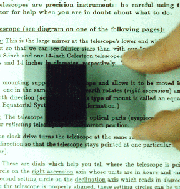
Most light is polarized in some direction. Polarizers transmit only that light which is oriented in a certain way. As you can see above, if you turn polarizers 90° to each other, they will transmit little or no light.
Test out your polarizers at the
Activities
Readings
Optics Kit Experiments
Mirror
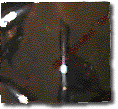
We use mirrors so often that we usually take them for granted. The mirror in the Optics Discovery Kit is made of a special material called mylar which has been aluminized, much like regular glass mirrors. This mirror, however, can be bent into both a convex and a concave shape.
Learn more about mirrors at the
Activities
Readings
Optics Kit Experiments
Prism

The prism enclosed in your kit, is not actually a part of the Optics Discovery Kit made by the Optical Society of America, but we added it because we believe it to be an interesting and useful tool in the study of light and optics. We can use the prism, like the diffraction grating to break white light into a spectrum.
Find out how prisms are like diffraction gratings at the
Activities
Readings
Customer Service
Tel: 609/573-6250; Fax: 609/573-6295
101 East Gloucester Pike
Barrington, NJ 08007-1380